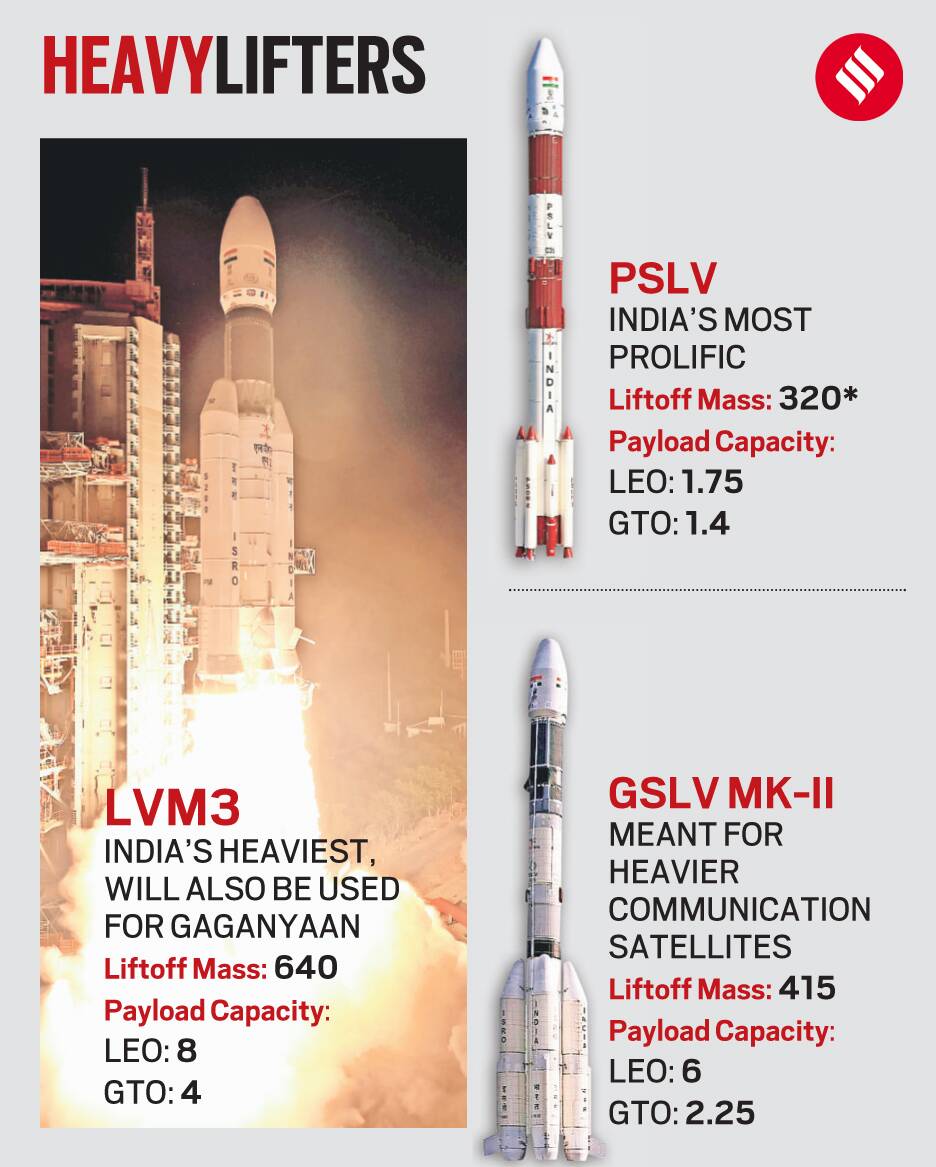ForumIAS announcing GS Foundation Program for UPSC CSE 2025-26 from 19 April. Click Here for more information.
ForumIAS Answer Writing Focus Group (AWFG) for Mains 2024 commencing from 24th June 2024. The Entrance Test for the program will be held on 28th April 2024 at 9 AM. To know more about the program visit: https://forumias.com/blog/awfg2024
Contents
Source: The post is based on the article “The heaviness of rockets, why it matters in space flight” published in Indian Express on 26th October 2022
What is the News?
ISRO has crossed an important milestone with the successful launch of the LVM3 M2/OneWeb India-1 mission.
The LVM3 rocket carried almost 6 tonnes of payload into lower-earth orbit, the most that any ISRO mission has delivered into space till date.
India’s Rockets

India currently has three operational launch vehicles:
Polar Satellite Launch Vehicle or PSLV: It has been the most commonly used having carried as many as 53 successful missions since 1993. Only two flights of PSLV have failed.
Geosynchronous Satellite Launch Vehicle or GSLV Mk-II: It has been used in 14 missions, of which four have ended in failures, most recently in 2021.
Launch Vehicle Mark-3 or LVM3: It has been flown five times, including the Chandrayaan 2 mission.
In addition, ISRO has been working on a reusable launch vehicle(RLV). Unlike other rockets, the RLV would not end up in space as waste. Instead, it can be brought back and refurbished for use multiple times.
About Launch Vehicle Mark-3 or LVM 3 (previously called as GSLV MK III)
Launch Vehicle Mark-3 (LVM 3) is a three-stage launch vehicle consisting of two solid propellants S200 strap-ons on its sides and a core stage comprising the L110 liquid stage and C25 cryogenic stage.
LMV3 rocket has a lift-off mass of 640 tonnes. It can carry up to 8 tonnes of payloads to lower earth orbits(LEO). To the geostationary transfer orbits (GTO), it can carry a payload of about 4 tonnes.
Note: The Ariane 5 rockets of Europe which was frequently used by ISRO for its heavy payloads has a lift-off mass of 780 tonnes and can carry 20-tonne payloads to lower earth orbits and 10 tonnes to GTO.
– The Falcon Heavy rockets from SpaceX, supposed to be the most powerful modern launch vehicles, weigh over 1,400 tonnes at launch time and can carry payloads weighing only about 60 tonnes.
What are the constraints of launch vehicles?
Tyranny of the rocket equation– The size of a launch vehicle is dictated by 1) The destination in space it is headed towards, 2) The kind of fuel mix that is being used (solid, liquid, cryogenic) and 3) The size of the payload.
– The choice of any two of these variables places severe restrictions on the flexibility of the third, which is popularly referred to as the “tyranny of the rocket equation”.
Gravity till LEO– Most of a rocket’s energy is burnt in travelling to the lower earth orbit because the force of gravity is the strongest here.
The gravity of the destination – If a space mission is headed towards any celestial body, more energy would be expended compared to simply attaining a space orbit.
What innovations can be used to overcome constraints?
The rockets can make multiple trips, carrying components of larger structures that can be assembled in space, similar to the International Space Station being built.
The other is the possibility of the use of resources available in situ on the Moon and Mars.




